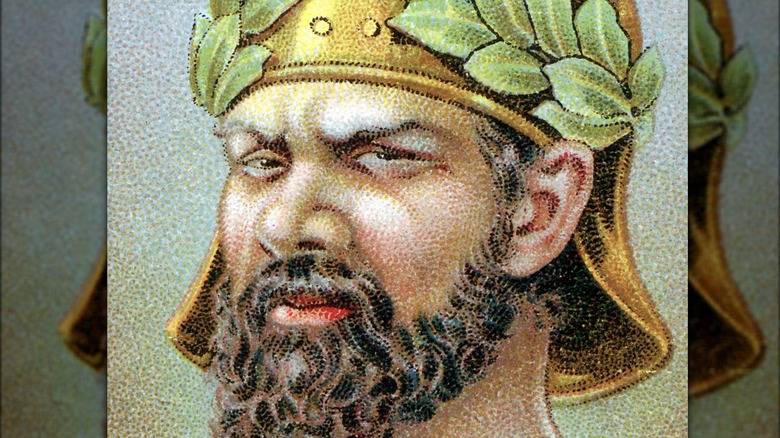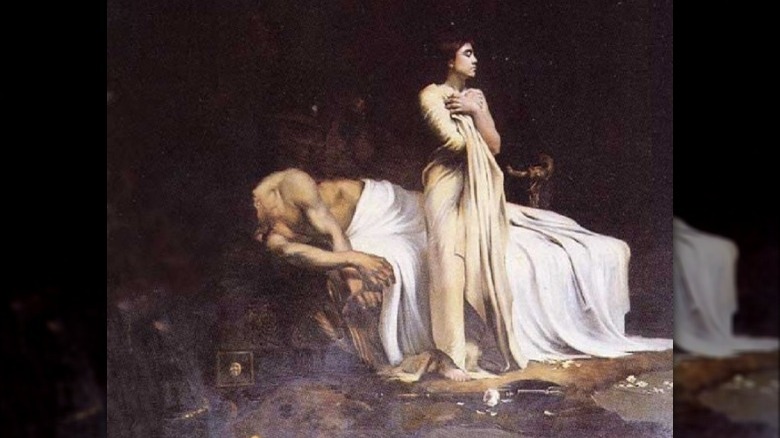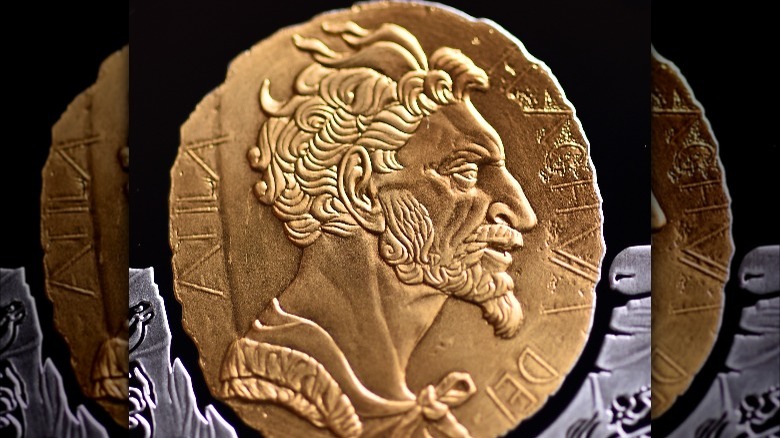Mystery Still Looms Today Over Attila The Hun's Dead Body
Attila the Hun was the ruler of the Hunnic Empire from A.D. 434 to 453, and he was called the "Scourge of God" for his cunning ways. After the death of Rugila, the King of the Huns, Attila and his brother Bleda were both delegated Huns' rulers. Later, however, Attila had his brother assassinated to rule solely over the people (per History). The ferocious leader had a vast army of warriors and was able to claim Roman cities. During his rule, Attila the Hun conquered Greece, the Balkan provinces, Italy, and Gaul, according to Britannica.
Attila's ruthless ways forced the Roman Empire's collapse. The Huns demanded payments in gold, which drained the Romans' resources and negatively affected their economy. Not only that, the Huns destroyed the territories they invaded. The Hun warriors were feared for their bow and arrow and horse riding skills, allowing them to attack from a distance, as reported by The Collector. Attila remained the leader of the Huns until his death, but despite his reputation as a merciless ruler, his death was rather anticlimactic. He didn't die in battle, nor was he killed by the enemy. Instead, death came knocking at his door on his wedding night.
Attila the Hun's death
Attila the Hun reportedly had many wives, and in A.D. 453, he married a woman named Ildico, who would be his last wife. According to Thought Co., Attila and his new bride celebrated their marriage with a big feast. Some of the details about the event remain a mystery, as only parts of the written account survived. On the morning after the celebration, Attila's guards entered his chamber only to find their leader dead and Ildico crying over his corpse. There were no wounds on his body, but he was bleeding from his nose.
No one knows the real cause of Attila's death, but many speculate that he suffered a hemorrhage after heavily indulging in food and drinks the night prior. He may have choked to death on his own blood that flowed from his nose down his throat as he slept, or suffered liver failure as a result of his lifestyle. Per The Collector, there were also some who believed that his new wife was responsible for his death. Despite these conjectures, however, there is no way to determine what really happened to the ruthless ruler, and the circumstances surrounding his death remain a mystery to this day.
Where was he buried?
The Hunnic Empire ruler was buried in three nesting coffins. The outermost coffin was made of iron, the middle was silver, and the innermost was gold. According to Smithsonian Magazine, Attila the Hun's warriors cut off their long hair and slashed their faces to honor their fallen leader, as he deserved to be buried "not with tears of women, but with the blood of warriors." Prisoners were forced to dig Attila's grave and were killed afterward to protect the location of his body. Huns who participated in the burial were killed too — what to them was considered an honorable death — to ensure the gravesite remains a secret.
According to lore, a river was diverted and Attila's body was buried on the river bed. The water was then released, flowing over the burial spot and effectively concealing Attila's remains, as reported by World History. Historian Christopher Kelly notes that the days following Attila's death were spent to honor him. The Huns mourned, engaged in funeral games, and feasted. It was a combination of grief and celebration of their leader's life — a practice that was common in ancient times.
The search for Attila the Hun's remains
Throughout the years, no one has located Attila the Hun's body. Historians, archeologists, and treasure hunters have attempted to find the grave with the help of historical records, but no one has been successful so far. In 2014, as reported by Ancient Origins, there were reports of the discovery of Attila's body. The news stated that construction workers building a bridge in Budapest, Hungary, discovered a burial chamber that belonged to Attila the Hun. The grave reportedly contained skeletal remains, jewelry, pottery, and a sword. The report has since been revealed to be a hoax.
According to The Vintage News, historians speculate that Attila was buried near the palace where he died. That may be a possibility, but the problem is that no one also knows the exact location of the palace, as it doesn't appear in records. There's no knowing whether someone would be able to locate the Attila's dead body. Even experts can't seem to locate it, and it might be best to let it remain a secret, just like the Huns intended.



